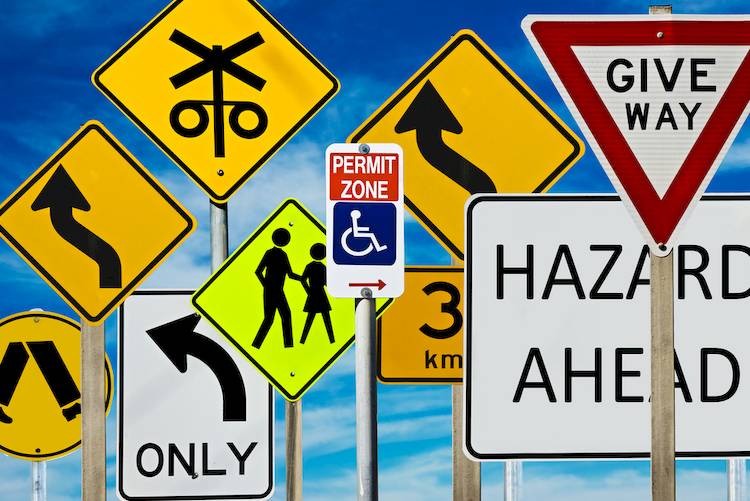

Driving requires knowledge of the traffic laws that all vehicle operators are required to follow. While you may be familiar with those in your home state, if you are planning to visit or move to New Jersey, you should make sure you are aware of any road rules that may be different. Below you’ll find the rules of the road for New Jersey drivers that may differ from what you are used to following.
Licenses and permits
Drivers who move to the state are required to obtain a New Jersey license with the first 60 days of being a resident.
New Jersey utilizes the Graduated Driver License (GDL) program. Drivers age 16 and older must complete all requirements for the special learner permit, probationary license and the basic driver license in order to drive legally on New Hampshire roads. All GDL drivers are required to display two decals provided by the New Jersey Motor Vehicle Commission.
New drivers who are over the age of 18 have to obtain an examination permit for supervised driving practice, then move on to the probationary license and basic driver license.
Seat belts and safety seats
All drivers and passengers of a moving vehicle are required to wear seat belts in New Jersey.
A police officer can pull a vehicle over for anyone in the front seat not wearing a seat belt. Those in the back seat can be issued a violation if the vehicle is pulled over for another reason.
Children under 8 years old and under 57 inches in height must be in a forward-facing safety seat with a 5-point harness in the back seat. If they outgrow the front-facing seat, they must be in an appropriate booster seat.
Children under 4 years old and less than 40 pounds must be in a rear-facing safety seat with a 5-point harness in the rear seat. When they outgrow the rear-facing seat, they should be in a front-facing car seat with a 5-point harness.
Children under 2 years old and weighing less than 30 pounds are required to be in a rear-facing safety seat with a 5-point harness in the rear seat.
Children under eight are only permitted in the front seat if they are in a proper safety seat or booster and there are no rear seats available. Rear-facing seats can only be used in the front seat if the airbag is deactivated.
Right of way
Motorists are required to yield the right of way in any situation in which failing to do so could result in an accident, regardless of whether the other party is in the wrong.
Drivers must also yield to postal vehicles that are attempting to reenter traffic.
Drivers must yield to pedestrians in crosswalks. Motorists are responsible for the safety of pedestrians.
New Jersey uses weave lanes on expressways. These lanes are for traffic entering and exiting the expressway at the same location. Drivers who are entering the expressway are required to yield to those who are exiting the expressway.
School buses
Drivers must stop a minimum of 25 feet from a stopped school bus that has its red lights flashing.
Drivers on the other side of highways with medians or safety islands separating the lanes are required to slow to 10 mph.
General rules
Backup lights - It is unlawful for drivers to operate a motor vehicle that is moving forward with backup lights that are turned on.
Window tints - It is illegal to add aftermarket tinting to the front windshield or the front side windows.
Snow and ice - All drivers are required to make every reasonable effort to remove all snow and ice that has accumulated on the hood, roof, windshield and trunk on a vehicle before driving it.
Idling - It is illegal to allow a motor vehicle to idle for more than three minutes except in situations such as being stuck in a traffic jam or going through a drive-through.
Right turn on red - Motorists are permitted to turn right at red lights if there are no signs prohibiting it, they come to a complete stop and yield to all pedestrians and oncoming traffic.
Frozen dessert trucks - Motorists are required to stop when approaching an ice cream truck. After yielding to pedestrians and ensuring no children are preparing to cross the roadway, drivers are permitted to pass at no more than 15 mph.
The above New Jersey rules of the road may be different from other states, but all drivers are required to follow them in addition to the more common traffic laws that motorists in every state must follow. If you have any additional questions or would like more information, make sure to check the New Jersey Driver Manual.



